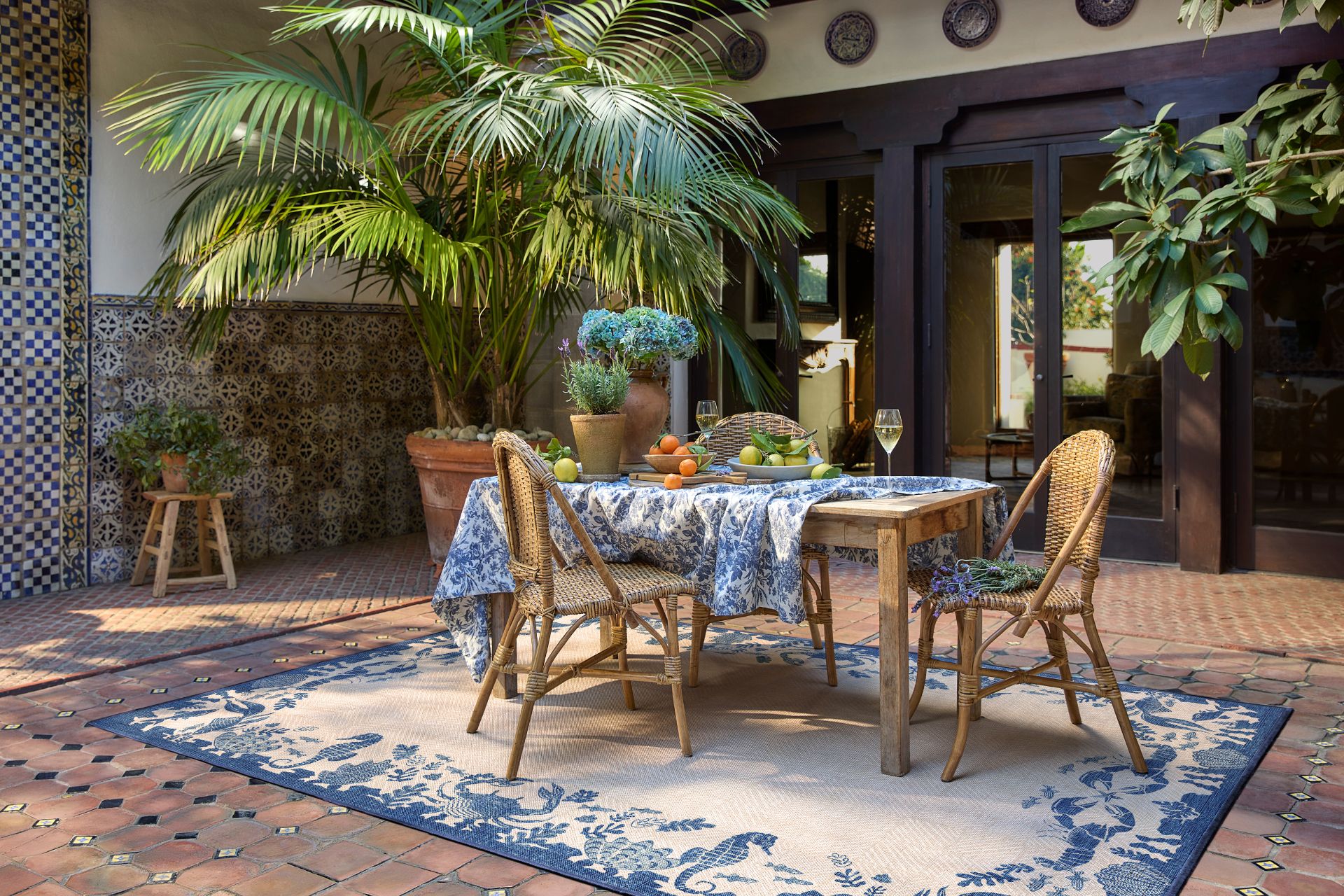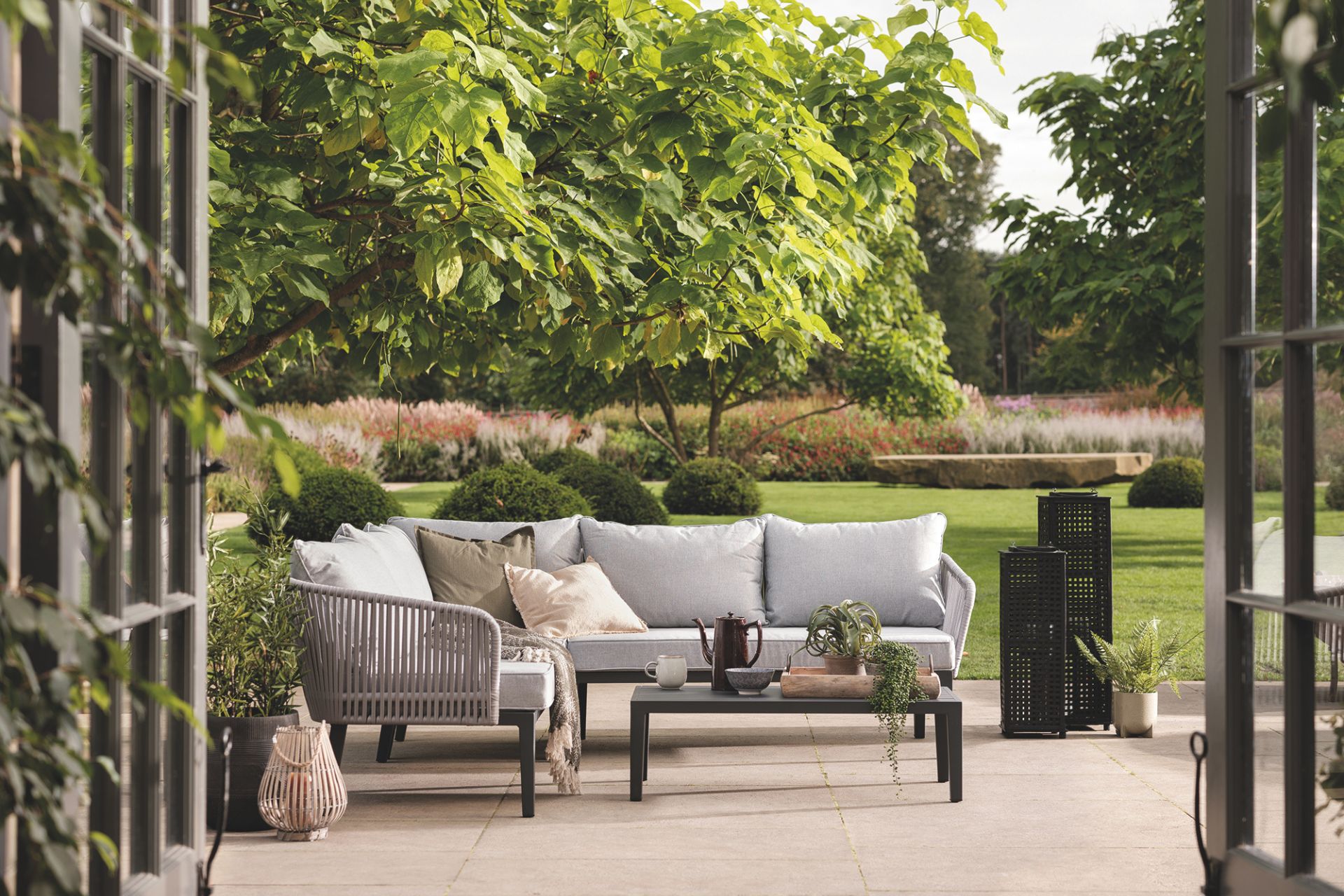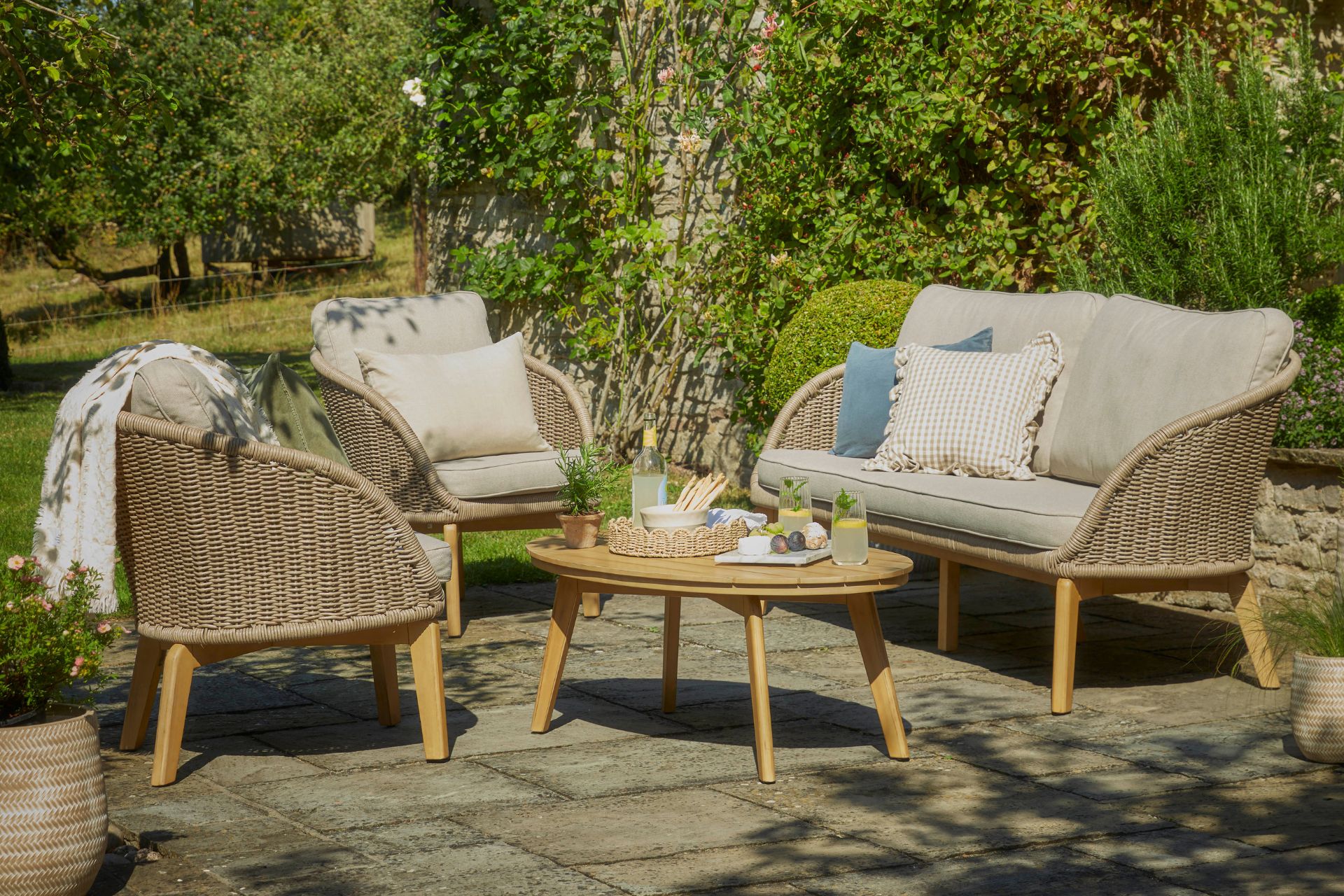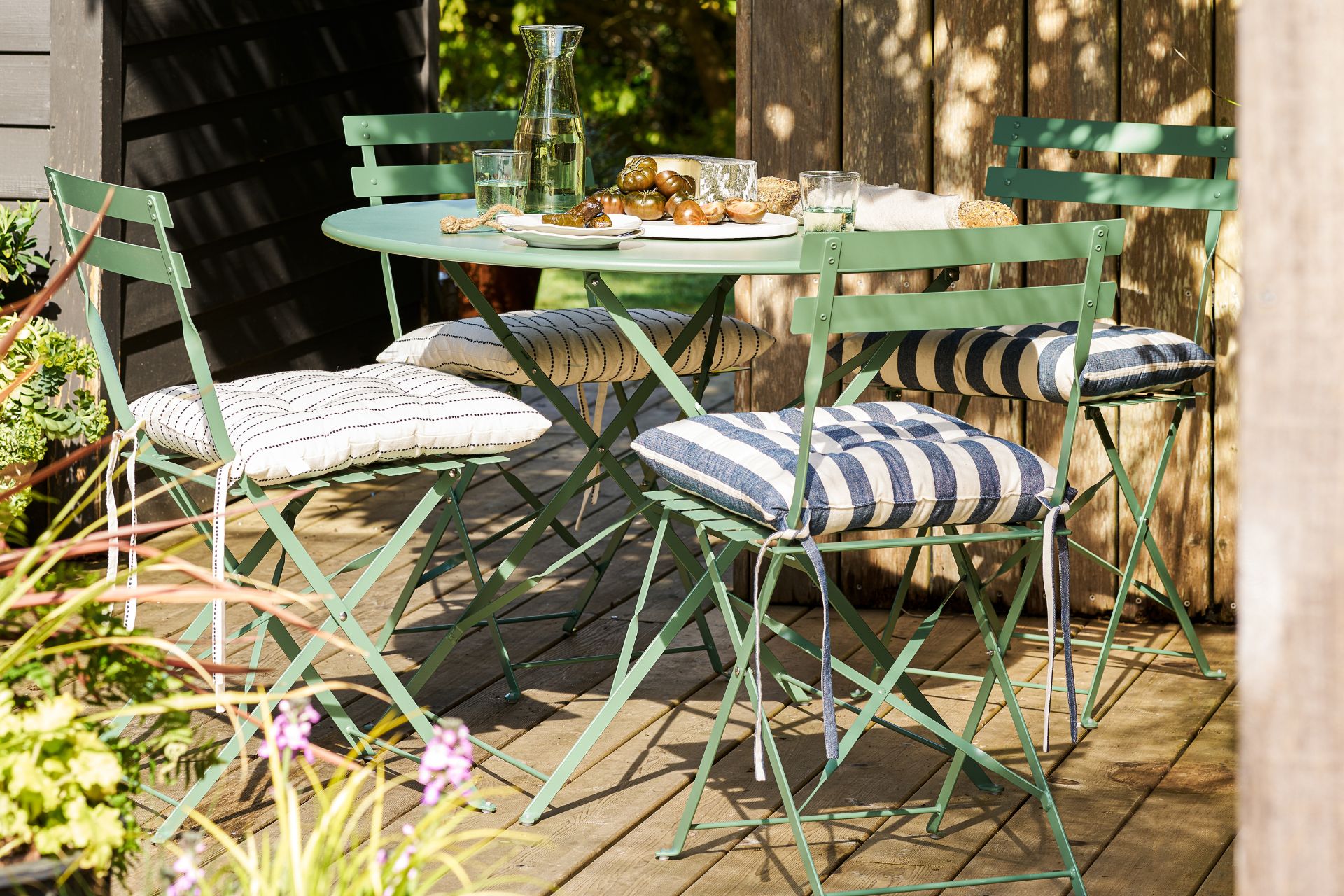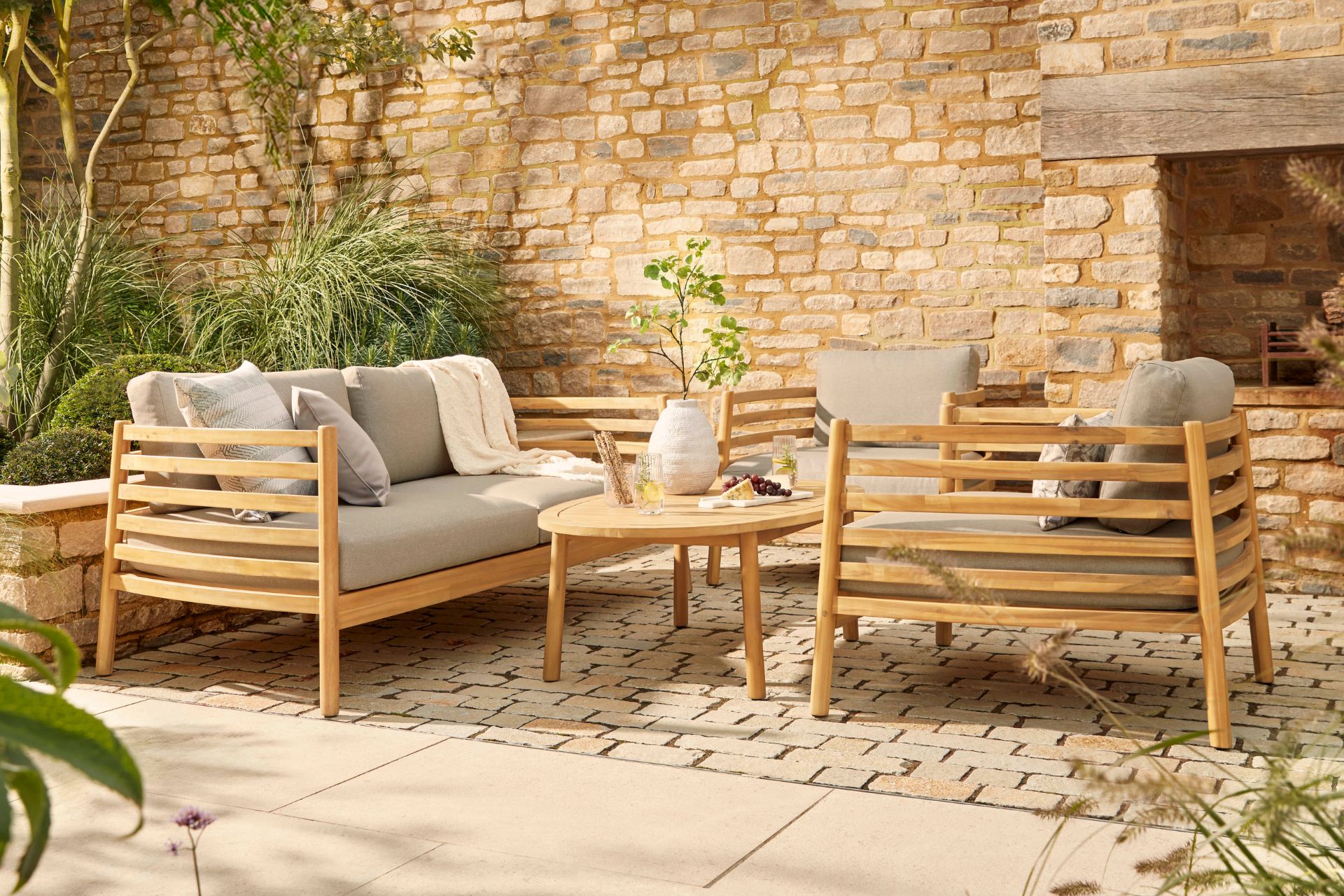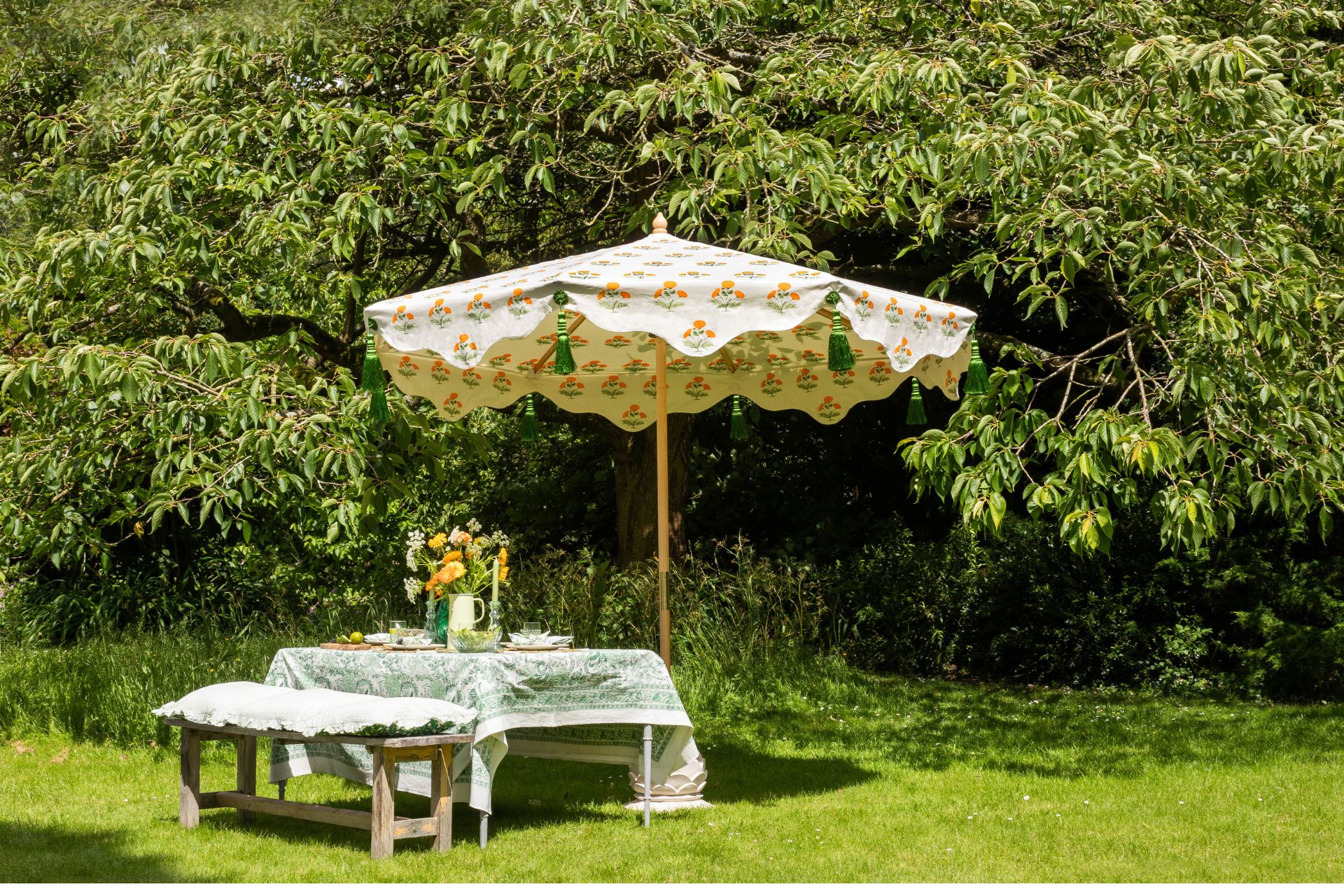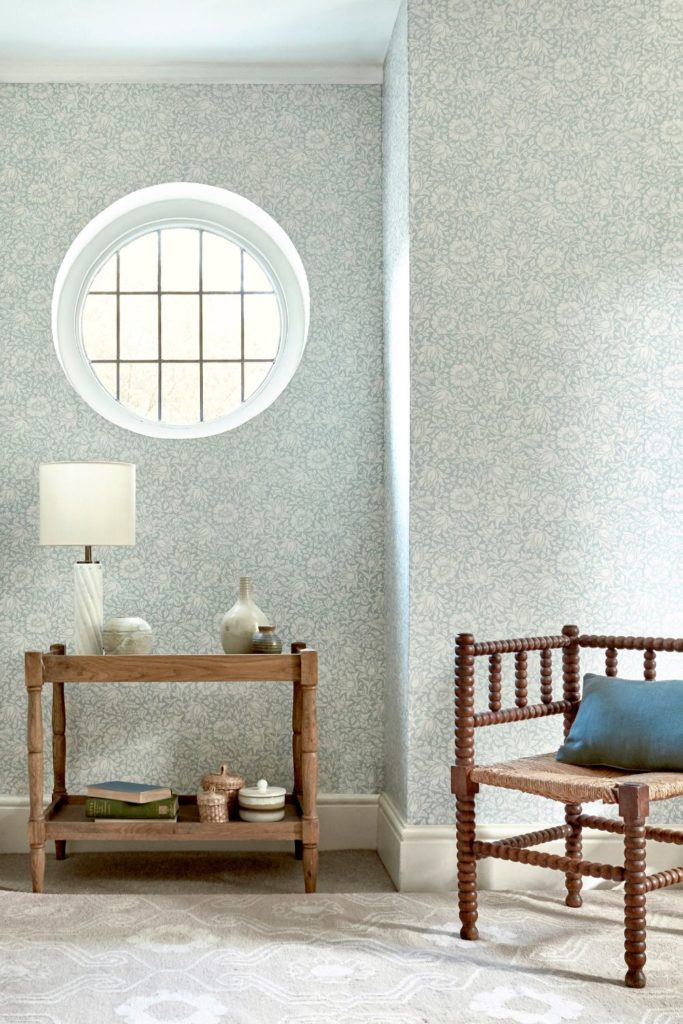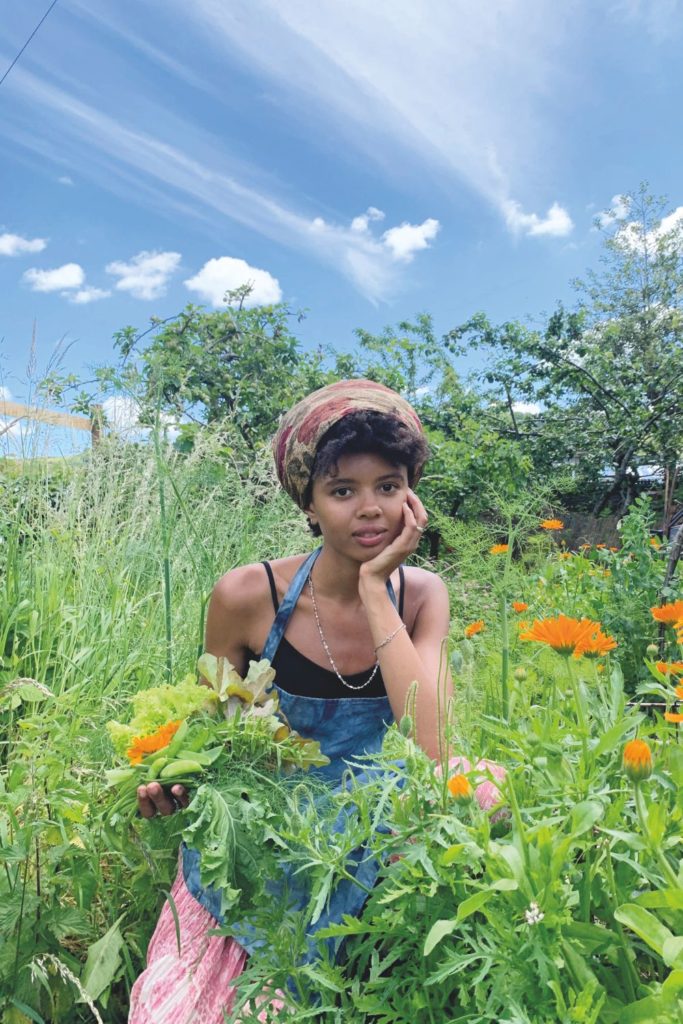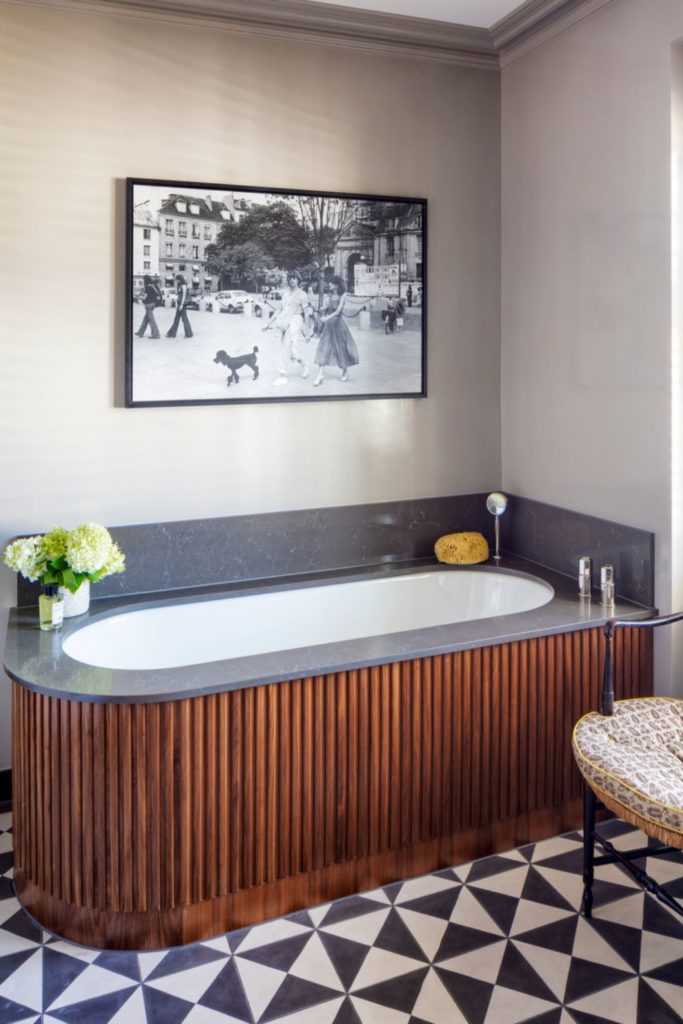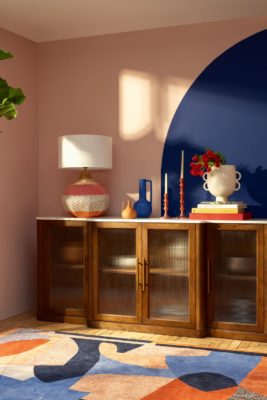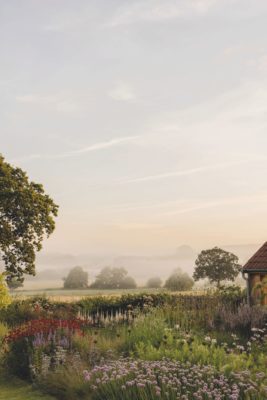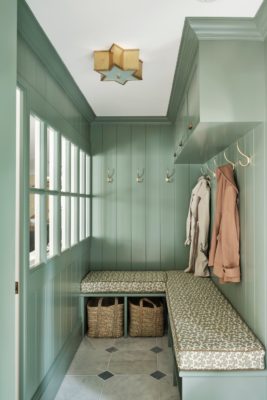From Bistro Sets To Grecian Features, These Are 2025’s Biggest Garden Trends
By
4 days ago
Get ready to transform your garden
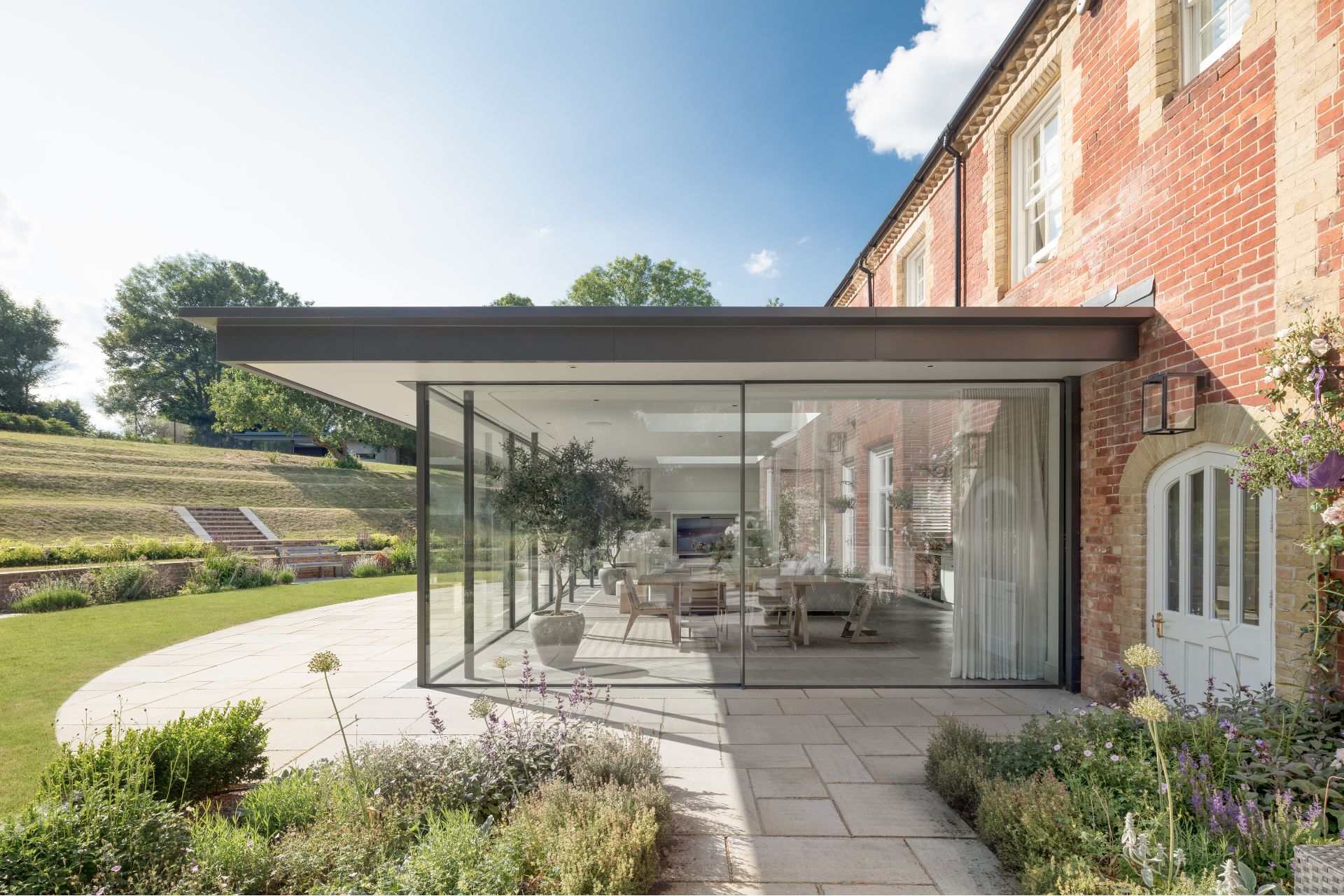
The weather might be temperamental, but summer has officially arrived – which means it’s time to give your garden a refresh. If you’re looking for a bit of inspiration, we asked design experts to give us the lowdown on all the garden trends we’ll see in 2025.
2025’s Biggest Garden Trends, Revealed
Grecian Gardens
Want to transform your garden into a sun-soaked sanctuary? Even if the British climate doesn’t co-operate, a few clever design features will do the trick – especially if you lean into the ‘Grecian Garden’ aesthetic.
‘Last year, we brought touches of the Amalfi Coast into our living spaces with the Amalficore trend, but this year, it appears Greek islands are influencing our outdoor spaces,’ says Charlotte Ford, interiors expert at Ruggable.
To get the look, start with a Santorini-inspired colour palette of crisp white and bright blue. ‘Incorporate the blue tones into your garden through furnishings and patterns like striped rugs and porcelain plant pots,’ suggests Charlotte. Then, think draped fabrics (like linen tablecloths) and plenty of natural materials like stone, marble and wood. ‘Whether you add these textures into your garden through seating, tables, ornaments or storage solutions, it’ll help to create a cohesive finish through your space whilst keeping on trend with the Grecian style,’ she reflects.
The ‘Fifth Room’
One of the biggest garden trends we’ve already seen this year is the ‘fifth room’: the idea that your garden is a valuable extension of your home. So whether you’re envisioning a dedicated wellness area, an outdoor kitchen, or a party-ready firepit, your garden deserves its moment in the spotlight.
‘Indoor/outdoor living has been seeing a rise in interest for several years, but recently there’s also been a spike in patio decoration and the desire to create an outdoor “room” as comfortable as your living room,’ comments Alex Peters, author of the Checkatrade Cost Guides. ‘This includes incorporating stylish soft furnishings, outdoor rugs, and creating interesting sources of shade using pergolas.’
‘The biggest outdoor living trend of 2025 is the blending together of indoor and outdoor spaces,’ echoes Lena Gierasinska, head of product and displays at Barker and Stonehouse. ‘Garden furniture now mirrors interior design aesthetics, with pieces like wicker and rattan furniture adding warmth and texture to outdoor spaces. This creates cohesive environments that extend the comfort and style of the home into the garden.’
Materiality is key here: think high-quality, durable furniture that you’d be happy to display in your living room as well as your garden. ‘To bridge the gap between indoor and outdoor spaces, trends have moved from lighter structures to more imposing silhouettes that not only enrich a space but also define it,’ says Arthur Gentil, designer of RH Outdoor’s Sedona collection. ‘This shift is marked by thicker frames, larger cushions, lower base seating, and a strong emphasis on luxury, achieved through the use of prestigious materials such as exotic wood, handcrafted aluminum, fiber weaving, and textured fabrics.’
Curved Furniture
While gorgeous curved seating remains a staple in many minimalist living spaces, the trend has now ventured into outdoor territory.
‘Increasingly, outdoor furniture shows a design language with great visual comfort,’ says Mario Ruiz, designer of RH Outdoor’s Lagos Collection. ‘There’s a real tendency towards organic design, using soft shapes with different materials which come together in a more fluid way.’
Softer, rounder items could also become your secret weapon if you’re looking to really nail the ‘fifth room’. ‘Curved silhouettes feel relaxed and informal, which aligns perfectly with the desire to create calm and cosy outdoor spaces that feel like extensions of indoor living,’ says Shelley Cochrane, accessories buyer at Furniture Village.
Bistro Sets
If you’re after garden furniture that doesn’t take up quite so much space, you’re in luck: the humble bistro set is back with a bang.
‘Bistro sets are having a real moment in 2025,’ Shelley confirms. ‘Inspired by the timeless elegance of Parisian cafés, bistro sets bring a sense of romance and sophistication to even the smallest of outdoor spaces. Their compact size makes them ideal for balconies, courtyards, and cosy garden corners.’
Another advantage is, of course, versatility. Not only are bistro sets particularly perfect for both a morning coffee or an alfresco apéritif, but they can also be easily repositioned, too. ‘They can be easily moved around the garden so that you can enjoy the last of the evening sun,’ says Lena, ‘or they can be easily moved between the indoors and outdoors – they also work well in garden rooms.’
Earthy Tones & Natural Materials
When it comes to colour palettes, it seems that gardens in 2025 are being defined by earthy Scandi style.
‘2025 is the year of the natural colour palette,’ says Alex Peters. ‘We’re moving away from bright plantpots and fences and instead shining a light on the plants themselves. Natural materials such as bamboo and timber provide a calming backdrop, and enable you to choose bright flowers and foliage in contrast.’
‘The long-reigning cool grey palette is gradually giving way to warmer, earthier tones like soft taupes, sand, and sun-baked terracotta,’ says Alex Bridgman, CEO of the eponymous furniture brand. ‘We’re also seeing renewed appreciation for tactile, organic materials; rope weaves, hand-finished teak, and modern interpretations of classic wicker are bringing a softness and textural richness to outdoor spaces.’
Productive Gardens
Your garden might provide the perfect spot to soak up the sunshine, but that doesn’t mean it can’t be a multifunctional space – or what Alex Peters calls a ‘productive garden’.
‘Brits are creating gardens fit for more than just summer relaxation,’ he says. ‘Interest in vegetable patches, herb corners and greenhouses seems to be growing once again.’
It’s no surprise that rewilding is also more popular than ever. ‘Rewilding creates a softer look which promotes natural wildlife habitats and reduces chemical interference,’ explains Alex. ‘It involves planting wildflower meadows instead of manicured lawns, choosing plants which don’t require chemical pesticides, and making space for animals via features like bug hotels and hedgehog routes.’
Feaured image courtesy of Studio Hooton. Architecture by Blunn Architects, photo by Martin Gardner.

